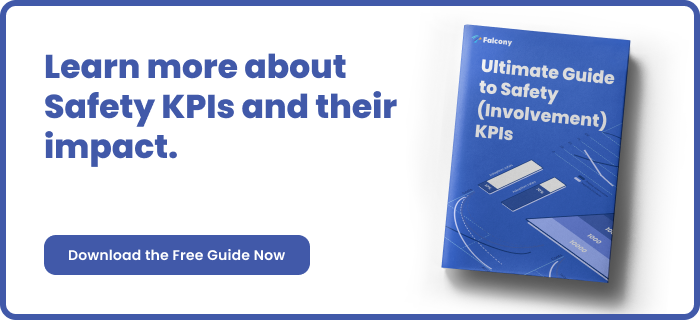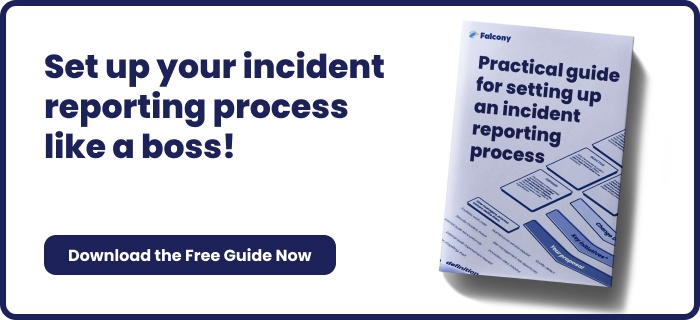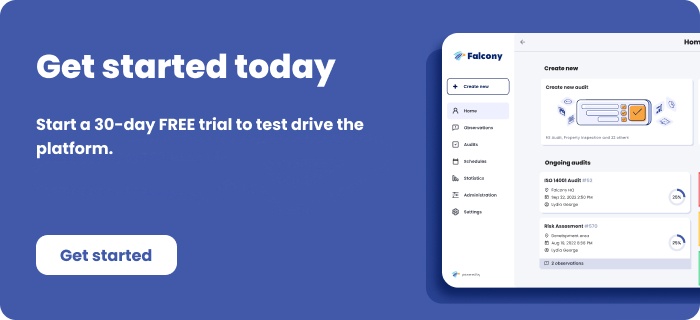Incident Reporting Across Multiple Countries
In an increasingly globalised business environment, incident reporting has become a critical function for organisations operating across multiple countries.
As companies expand their reach internationally, the need to manage incidents in a way that complies with diverse regulatory frameworks and cultural expectations is more important than ever. This blog will explore the challenges and best practices for incident reporting across borders, highlighting how organisations can effectively navigate this complex landscape.
The Importance of Incident Reporting
Incident reporting serves as a fundamental tool for organisations to identify, document, and manage various types of incidents, from workplace accidents to environmental spills and data breaches. Timely and accurate reporting helps mitigate risks, ensures compliance with local regulations, and fosters a culture of transparency and accountability.
For multinational organisations, the task becomes more intricate. The sheer number of jurisdictions, each with its own set of laws, reporting standards, and response protocols, can make it challenging to maintain consistency across all regions. This is why understanding the global regulatory landscape is crucial to establishing a robust and efficient incident reporting system.
Challenges in Cross-Border Incident Reporting
Diverse Regulatory Requirements: Each country has its own set of laws and regulations governing incident reporting. In the European Union, for instance, companies must adhere to strict reporting requirements related to health and safety under the EU’s Health and Safety at Work Directive. In contrast, the United States has the Occupational Safety and Health Administration (OSHA), which enforces different standards and timelines for reporting incidents. Navigating these regulations can be a daunting task for organisations that operate in multiple regions.
Language and Cultural Barriers: Language differences can pose significant challenges in accurately documenting incidents. Misinterpretations or incorrect translations can result in errors that impact compliance, reporting accuracy, and incident analysis. Furthermore, cultural differences can influence how incidents are perceived and reported. For instance, certain regions may have a more hierarchical reporting structure, where employees are less likely to report incidents due to fear of retribution.
Technological Integration: For organisations with global operations, integrating incident reporting systems across multiple countries can be complex. Different regions may rely on different software platforms, data formats, and reporting mechanisms, which can hinder the consolidation of incident data. Ensuring seamless integration and data consistency across various platforms is vital for accurate reporting and analysis.
Best Practices for Managing Incident Reporting Across Borders
Standardising Reporting Processes: One of the most effective ways to address the challenges of cross-border incident reporting is by standardising reporting processes across all regions. While adapting to local regulatory requirements is necessary, having a centralised system that outlines clear guidelines for incident reporting can ensure consistency. This may involve implementing standardised reporting templates, timelines, and procedures that are flexible enough to accommodate regional variations.
Implementing Multilingual and Multicultural Systems: To overcome language and cultural barriers, organisations should implement incident reporting systems that support multiple languages and are culturally sensitive. This ensures that employees from different regions can report incidents in their native language, reducing the likelihood of miscommunication and ensuring that incidents are documented accurately.
Leveraging Technology for Seamless Integration: Adopting a unified software solution that integrates incident reporting across all regions can significantly enhance efficiency. Cloud-based platforms, for example, allow for real-time data entry and reporting, ensuring that incidents are captured and addressed promptly, regardless of the location. These platforms should also be capable of automating reporting processes, sending alerts, and generating detailed reports that comply with local regulations.
Regular Training and Awareness: Ongoing training and awareness programmes are essential for ensuring that employees understand the importance of incident reporting and are familiar with the reporting protocols in their respective countries. This training should cover local laws, the company’s reporting procedures, and how to effectively use the reporting system. Additionally, organisations should foster an open reporting culture where employees feel safe and encouraged to report incidents without fear of repercussions.
Data Privacy and Compliance: When dealing with incident reporting across multiple countries, organisations must also ensure compliance with data privacy regulations such as the GDPR in Europe or the CCPA in California. This includes ensuring that incident data is securely stored, access is restricted to authorised personnel, and that the data is only used for the intended purpose.
Industry Examples
Manufacturing Sector: A global manufacturing company with operations in over 30 countries faced challenges consolidating incident data due to differing reporting standards. By adopting a cloud-based system that adhered to local regulations, such as OSHA in the U.S. and EU directives, the company ensured timely and consistent reporting across all sites, improving compliance and safety response.
Technology Industry: A multinational tech company operating in 50+ countries struggled with reporting data breaches under varying regulations. Implementing an integrated incident management system, the company ensured compliance with GDPR in the EU and other local data laws. This enabled quick notifications and customised reports, helping the firm manage breaches effectively across borders.
Energy Sector: A global energy company needed to report environmental incidents across jurisdictions, such as oil spills and gas leaks. With an integrated reporting system, it ensured compliance with local regulations like the EPA in the U.S. and the Environment Agency in the UK, improving response times and minimising financial and environmental risks.
Healthcare Sector: A multinational healthcare provider needed to standardise incident reporting for medical errors across multiple countries. By adopting a global reporting system aligned with international standards, the company streamlined compliance with regulations like HIPAA and NHS guidelines, improving patient safety and care outcomes.
Logistics and Transportation: A global logistics company with a fleet operating across multiple countries faced challenges in reporting transportation incidents like accidents and delays. By implementing a centralised system that could accommodate regional regulations, the company ensured consistent reporting and quicker resolution of incidents, enhancing operational efficiency and safety.
Conclusion
Effective incident reporting across multiple countries requires a strategic approach that considers diverse regulatory environments, technological integration, and cultural differences. By standardising reporting processes, leveraging the right technology, and fostering a culture of transparency, organisations can ensure that they are well-equipped to handle incidents on a global scale. In doing so, they not only protect their employees, customers, and stakeholders but also ensure long-term compliance and sustainability in an increasingly interconnected world.
If you're looking for a platform to collect more data to monitor your organisation's incident reporting practices, Falcony | Observe have you covered. You can find more information on our website or test out our 30-day free trial:
We are building the world's first operational involvement platform. Our mission is to make the process of finding, sharing, fixing and learning from issues and observations as easy as thinking about them and as rewarding as being remembered for them.
By doing this, we are making work more meaningful for all parties involved.
More information at falcony.io.

Related posts
7 Most Common Inspection Templates in Government and Public Sector
Government departments and public sector organisations have a legal and ethical responsibility to...
7 Reasons Why Incident Dashboards are Essential
In today's data-driven world, the importance of incident management cannot be overstated.
...
Types of Corporate Security Incidents Every Organisation Should Record
In today’s rapidly evolving digital and physical environments, corporate security is paramount.
...







